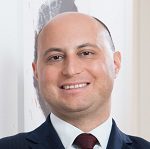Facts
The United Kingdom’s Comptroller General of Patents rejected Abraxis Bioscience’s application for the granting of the SPC for the nab-paclitaxel medicinal product for treating cancer, marketed under the name “Abraxane”. In fact, the Comptroller declared that the medicinal product was missing one of the conditions necessary for granting the SPC as required by Article 3 (d) of Regulation (EC) no. 469/2009.
Specifically, according to the Comptroller, the MA granted for nab-paclitaxel could not be considered the product’s first MA subject to the SPC application. This decision is based on the fact that the old active ingredient, paclitaxel, contained in nab-paclitaxel within a new formulation with albumin, was already covered by the MA. Abraxis therefore challenged this decision before the EU High Court of Justice.
Conditions for granting an SPC
According to the above-mentioned Regulation (EC) no. 469/2009 (Article 3), an SPC can be granted if the product, subject to the application, holds a currently valid MA (b) and if the MA is the first authorization for the medicinal product (d).
Given these conditions, the Court of Justice questioned whether the MA granted for the new formulation of an old active ingredient could be considered a new MA and therefore the first MA for that product. In order to solve this issue, the Court had to assess whether the new formulation of an existing active ingredient (including additional ingredients) represented a new and distinct product.
According to the Court of Justice the product corresponds with the active ingredient
On this point, the Court confirmed a restrictive interpretation of the concept of “product”, including in its definition only the active ingredient. Ingredients that do not have any therapeutic effect (such as albumin in the present case) are therefore excluded since they act exclusively as vectors for the active ingredient, for example paclitaxel within the new formulation of the ingredient nab-paclitaxel. Consequently, nab-paclitaxel cannot be included within the definition of “product” according to the Regulation (EC) 469/2009 and therefore cannot constitute a distinct product from the old active ingredient.
These considerations give rise to the general principle according to which the new formulation of an old active ingredient does not constitute a new product, distinct from the previous product, when an active ingredient is combined with a substance lacking therapeutic effect and is therefore not considered within the concept of a ”product”.
The MA granted to the new formulation is not the first MA for the product
Finally, the Court analyzed the possibility of considering the MA granted to the new formulation of an old active ingredient as the first authorization pursuant to Article 3 (d) of the referenced Regulation and it reached the conclusion that it was not possible to recognize the authorization as the first if the old active ingredient had already been covered by the MA.
This would, in fact, be contrary to the aim of the Regulation regarding SPCs, which aims to promote the protection of pharmaceutical research leading to the first placement on the market of an active ingredient or a combination of active ingredients, in a balanced approach to encourage investments in research for new pharmaceutical products and protect public health, as specified by the Court. Therefore, in such circumstances, the conditions for the granting of an SPC are not met.

